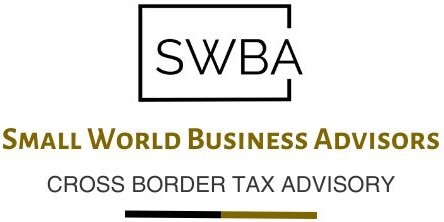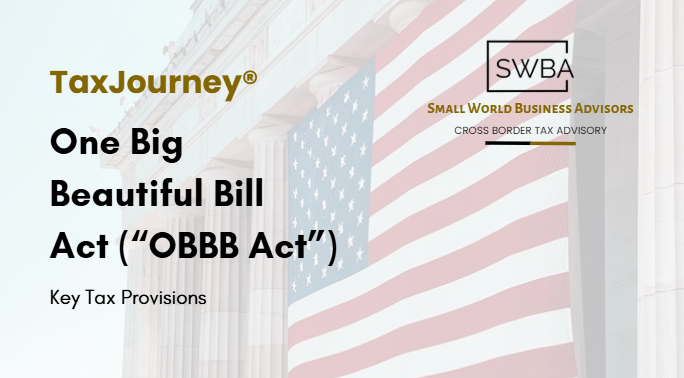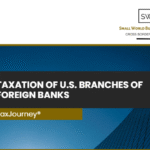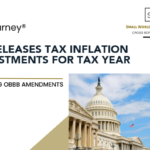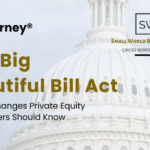Enacted on July 4, 2025, the One Big Beautiful Bill Act (“OBBBA”) constitutes a sweeping reform of federal tax and fiscal policy. Passed via budget reconciliation, the legislation integrates permanent extensions of prior tax provisions with newly enacted deductions, expanded reporting obligations, and targeted compliance mechanisms. The Act encompasses a broad spectrum of tax domains—including individual and corporate taxation, financial statement implications under U.S. GAAP, and administrative enforcement protocols.
While certain provisions are effective immediately, others are subject to phased implementation beginning in 2026. This document provides a structured summary of the Act’s principal tax-related measures, with particular focus on interpretive guidance issued by Treasury and IRS, effective date considerations, and areas where federal-state conformity may diverge— especially in fixed-date conformity jurisdictions.
R&D Tax Credit Coordination and Transition Rules
The Act introduces a coordinated approach between Section 174A, Section 41, and Section 280C to streamline how domestic research and experimental expenditures are treated for tax purposes.
Beginning with tax years after December 31, 2024, taxpayers must either reduce their deduction or capitalization of domestic research expenses by the amount of the Section 41 research credit claimed, or elect to take a reduced credit instead. This adjustment is treated as a change in accounting method, applied prospectively, without requiring retroactive corrections.
To support a smoother transition, the Act includes specific provisions for small businesses that meet the gross receipts test under Section 448(c). These businesses may retroactively apply Section 174A to tax years beginning after December 31, 2021, by amending prior returns or treating the change as a method adjustment.
Additionally, all taxpayers who incurred domestic research expenditures between 2022 and 2024 may elect to deduct the remaining unamortized balance over one or two tax years starting in 2025. This flexibility allows for more efficient recovery of previously capitalized costs and aligns with the broader goal of simplifying compliance and enhancing the utility of the research credit.
Revised Treatment of Business Interest Expense Under the OBBB Act
The One Big Beautiful Bill Act introduces several permanent changes to how business interest expense is calculated and deducted, particularly under Section 163(j). These updates aim to simplify compliance and offer greater clarity for businesses managing debt and capital investments.
- EBITDA-Based Deduction Framework Restored Starting with tax years after December 31, 2024, the calculation of adjusted taxable income (“ATI”) will once again include depreciation and amortization adjustments, effectively aligning ATI with EBITDA. This change allows businesses to deduct a larger portion of their interest expense, especially those with significant capital assets.
- Expanded Scope of Floor Plan Financing The definition of “motor vehicle” under the floor plan financing exception now includes trailers and campers designed for temporary living use. This expansion ensures that interest on financing for such inventory remains deductible, benefiting dealerships and retailers in the recreational vehicle sector.
- Exclusion of Certain Foreign Income from ATI Beginning in 2025, ATI will exclude specific foreign income components such as Net Controlled Foreign Corporation Tested Income (“NCTI”), Subpart F inclusions, Section 78 gross-ups, and related deductions. This adjustment narrows the base used to determine interest deduction limits, particularly for multinational entities.
- Clarified Treatment of Capitalized Interest The Act confirms that the Section 163(j) limitation applies to all business interest, whether deducted directly or capitalized. When interest is subject to capitalization, the allowable deduction is first applied to those amounts. However, interest capitalized under Sections 263(g) and 263A(f) remains outside the scope of this provision.
Permanent Extension of Excess Business Loss Limitation
- The One Big Beautiful Bill Act permanently extends the limitation on excess business losses for noncorporate taxpayers, effective for tax years beginning after December 31, 2026.
- Excess losses exceeding the annual threshold will be treated as net operating losses (NOLs) and carried forward to subsequent tax years without restriction to business income only.
- The Act also resets the limitation thresholds to $250,000 for single filers and $500,000 for joint filers, with inflation adjustments based on 2024 figures. These updated limits apply beginning January 1, 2026.
Updated Ownership Threshold for Taxable REIT Subsidiaries
Effective for tax years beginning after December 31, 2025, the One Big Beautiful Bill Act increases the allowable asset concentration in taxable REIT subsidiaries (TRSs). Real estate investment trusts (REITs) may now hold securities of TRSs representing up to 25 percent of their total assets at the close of each calendar quarter, up from the previous 20 percent limit.
This adjustment provides REITs with enhanced structural flexibility, enabling expanded subsidiary activities while maintaining compliance with existing REIT qualification requirements.
Revised Deduction Framework for Qualified Business Income
Beginning in tax years after December 31, 2025, the One Big Beautiful Bill Act introduces significant and enduring changes to Section 199A, aimed at enhancing accessibility and consistency for noncorporate taxpayers.
- The Act formalizes the 20 percent deduction for qualified business income (“QBI”), including earnings from REIT dividends, qualified publicly traded partnerships (“PTPs”), and specified cooperative activities. This rate differs from the 23 percent deduction proposed in earlier House legislation.
- Income phase-in thresholds have been expanded, allowing joint filers up to $150,000 and other filers up to $75,000 in taxable income before deduction limitations begin. This adjustment broadens eligibility for full deduction benefits.
- A guaranteed minimum deduction of $400 is introduced for taxpayers who materially participate in their businesses under Section 469(h) and generate at least $1,000 in QBI from active trades or businesses. This ensures baseline support for actively engaged individuals, even with modest earnings.
- Inflation indexing is recalibrated using 2024 as the base year, updating thresholds and deduction parameters to reflect more current economic conditions.
- The final legislation does not incorporate Business Development Company (BDC) interest dividends into the definition of qualified income, an element that was present in the House proposal but ultimately excluded from the Act.
PTET Treatment Under the OBBB Act
In response to the SALT deduction cap under the TCJA, many states adopted Pass-through Entity Tax (“PTET”) regimes, allowing partnerships and S corporations to pay state taxes at the entity level. The IRS affirmed this approach in Notice 2020-75, enabling deductions without applying the SALT cap at the individual level.
The One Big Beautiful Bill Act does not modify PTET provisions. Existing treatment remains in effect, subject to future Treasury or IRS guidance.
Long-Term Application of 24% Backup Withholding
Under IRC Section 3406, payors making reportable payments—commonly those disclosed on Form 1099—must obtain a valid U.S. Taxpayer Identification Number (TIN) from the recipient. If the recipient does not provide a TIN, backup withholding applies at a rate equal to the fourth-lowest individual income tax bracket under Section 1(c).
The Tax Cuts and Jobs Act (TCJA) temporarily set this rate at 24 percent through 2025. The One Big Beautiful Bill Act makes this rate permanent by extending the TCJA’s bracket structure indefinitely, preserving the 24 percent backup withholding rate beyond calendar year 2025.
Statutory Enhancements to ERTC Compliance and Claim Review
The One Big Beautiful Bill Act establishes several oversight provisions aimed at reinforcing accountability around Employee Retention Tax Credit (ERTC) claims tied to COVID-19 relief.
- Refund Claims Deadline Refund requests submitted after January 31, 2024, are no longer eligible. This marks a firm cutoff for retroactive filings.
- Extended Assessment Period The statute of limitations for evaluating certain ERTC claims has been expanded, granting the IRS additional time to review third- and fourth-quarter filings from 2021.
- Due Diligence Requirements for Promoters Individuals or entities offering ERTC-related services—classified as promoters—must meet specific due diligence obligations for Q3 2021 claims. Noncompliance results in a $1,000 penalty per failure.
- Criteria for Promoter Classification A person or firm is considered an ERTC promoter if they:
- Earn compensation based on the value of ERTC claims and derive over 20% of their annual gross receipts from such services, or
- Have gross receipts either exceeding 50% from ERTC-related activity or totaling at least $500,000 while also surpassing 20% of annual gross receipts.
ERTC Refund Deadlines and IRS Assessment Extension
Under the One Big Beautiful Bill Act, several provisions revise the treatment of Employee Retention Tax Credit claims related to the third quarter of 2021. Certified professional employer organizations are excluded from the definition of ERTC promoters and are not subject to the associated compliance penalties. Refund claims for Q3 2021 ERTC submitted after January 31, 2024, are no longer permitted, regardless of previous statutory timelines.
The Act also extends the IRS’s review period for Q3 2021 claims to six years. This window begins from the latest of the original quarterly return filing date, April 15 of the year following the calendar year in question, or the date the ERTC claim was made.
Additionally, taxpayers may file a refund claim for deductions denied due to disallowed Q3 2021 ERTC wages. These refund requests must be submitted within the same six-year review period.
Updated Employer Credit Thresholds for Child Care Assistance
The One Big Beautiful Bill Act incorporates legislative revisions to Section 45F as previously approved by the Senate and House. These changes apply to qualifying expenses incurred after December 31, 2025. Under the updated provision, the allowable employer credit for providing child care assistance is significantly increased. The annual cap rises from $150,000 to $500,000, while eligible small businesses may claim up to $600,000. Both thresholds will be adjusted annually for inflation to maintain their intended value over time.
Transition from GILTI to NCTI: Key Legislative Changes
The Act restructures the GILTI regime by removing the QBAI reduction and requiring inclusion of Net CFC Tested Income (NCTI). Beginning after December 31, 2025, the Section 250 deduction for NCTI and the related Section 78 gross-up is reduced to 40 percent. Foreign tax credits for NCTI are limited to 90 percent, with a 10 percent disallowance applied to taxes on distributions of previously taxed earnings and profits (PTEP). These changes result in an effective U.S. tax rate on NCTI between 12.6 and 14 percent.
These changes apply to taxable years of foreign corporations beginning after December 31, 2025. The disallowance of foreign taxes paid or deemed paid on distributions of previously taxed earnings and profits (PTEP) related to NCTI applies to distributions made after June 28, 2025.
For foreign tax credit limitation purposes, deductible amounts allocable to NCTI are limited to: (1) the Section 250 deduction, including taxes imposed under Section 164(a)(3), and (2) deductions directly attributable to the inclusion. Interest and research expenditures are excluded from NCTI allocation and instead assigned to U.S.-source income.
Finalization of TCJA Rate Reductions and Bracket Indexing Rules
The Tax Cuts and Jobs Act (TCJA) reduced the highest ordinary income tax rate from 39.6% to 37% for individuals, estates, and trusts—originally a temporary measure. The Act now makes this reduction permanent, maintaining the top bracket at 37%.
Income tax brackets remain subject to annual inflation adjustments. However, the Act selectively applies an additional year of inflation indexing to the thresholds for the 10%, 12%, and the starting point of the 22% brackets. This enhancement does not extend to the 35% and 37% brackets, which will continue to follow standard adjustment protocols.
Extension of Qualified Disaster Loss Provisions
The Act preserves taxpayer-favorable treatment for personal casualty losses that meet the criteria of Qualified Disaster Losses. Eligible taxpayers may deduct such losses without applying the 10% adjusted gross income (AGI) reduction typically required under standard rules.
These provisions remain applicable to disasters:
- Officially declared by the President no later than February 11, 2025
- Whose incident periods begin before December 12, 2024
- And conclude by January 11, 2025
While no substantive modifications were made to the prior Senate or House proposals, the Act effectively extends coverage. Certain disaster events occurring at the end of 2024 and the beginning of 2025 now fall within the statutory parameters and qualify under the updated definition of Qualified Disaster Losses.
Inclusion of State-Declared Disasters in Loss Relief
The Act formalizes the TCJA’s temporary limitation on itemized deductions for personal casualty losses, restricting deductibility to losses arising from Federally declared disasters. These include property losses unrelated to business or profit-driven activities, such as those caused by fire, storm, theft, or similar events.
Effective for tax years beginning after December 31, 2025, the Act expands eligibility to include “State Declared Disasters.” These are defined as natural catastrophes—such as fires, floods, or explosions—recognized jointly by the Governor of the affected state and the Secretary as warranting relief under the personal casualty loss provisions.
Standardization of Itemized Deduction Framework Post-TCJA
The Act solidifies the TCJA’s temporary repeal of miscellaneous itemized deductions—such as investment-related expenses, certain legal fees, and unreimbursed employee business costs— by making the repeal permanent.
Importantly, unreimbursed expenses incurred by eligible educators are excluded from this repeal. The Act ensures that qualified educator-related expenses remain deductible and are no longer categorized as miscellaneous itemized deductions.
Post-Enactment Modifications to Section 1202 Treatment
The Act codifies prior limitations under Section 1202, retaining the requirement that Qualified Small Business Stock (QSBS) be held for more than five years to qualify for the gain exclusion. The maximum exclusion remains the greater of $10 million—adjusted for prior exempted gains— or ten times the taxpayer’s aggregate adjusted basis in the disposed stock. The applicable exclusion percentage continues to depend on the stock’s issuance date, with a 100% exclusion applying to shares issued after September 27, 2010.
To qualify as QSBS, the issuing corporation must satisfy several criteria, including classification as a qualified small business under the gross asset threshold.
The Act introduces key changes to Section 1202, most notably:
- Establishment of a tiered exclusion framework based on holding period for QSBS acquired after July 4, 2025
- 50% exclusion for stock held three years
- 75% exclusion for stock held four years
- 100% exclusion for stock held five years or longer
Additionally, gain excluded under any tier is exempt from Alternative Minimum Tax (AMT) adjustments, streamlining compliance for eligible investors.
The Act increases the Section 1202 gain exclusion limit from $10 million to $15 million per issuer, with inflation adjustments beginning in 2027. This enhancement does not apply to taxpayers who have already utilized the full exclusion amount in prior years.
Additionally, the gross asset threshold for a corporation to qualify as a small business is raised from $50 million to $75 million, also subject to inflation indexing. These changes apply to Qualified Small Business Stock (QSBS) acquired on or after the date of enactment, with acquisition dates determined under Section 1223.
SALT Deduction Relief for Middle-Income Taxpayers
The Act temporarily increases the cap on the State and Local Tax (SALT) deduction to $40,000 for tax years 2025 through 2029, offering expanded relief to higher-income itemizers. For individuals filing separately, the cap is limited to $20,000 during this period. Beginning in 2030, the cap permanently reverts to $10,000 ($5,000 for separate filers).
In line with the House-passed bill, a phased reduction applies based on modified adjusted gross income (MAGI), beginning at $500,000 in 2025. Both the cap and phaseout threshold increase annually by 1% through 2029, with the deduction never falling below the $10,000 floor. All applicable limits and thresholds are halved for separate filers.
The Act does not alter the federal tax treatment of state and local taxes (SALT) imposed on passthrough entities. As a result, both elective Pass-Through Entity Taxes (PTET) and longstanding non-elective taxes—such as New York City’s Unincorporated Business Tax (UBT)— remain deductible at the entity level under current law.
However, the continued federal recognition of PTET regimes is based solely on IRS Notice 2020-75, which has not yet been codified. Accordingly, the deductibility of these taxes remains subject to future regulatory action by the Treasury Department. The SALT cap provisions introduced by the Act apply to taxable years beginning after December 31, 2024.
TCJA AMT Limits Made Permanent
The Act permanently extends the increased alternative minimum tax (AMT) exemption amounts and phase-out thresholds originally enacted under the TCJA. These provisions, which were set to expire after 2025, will now remain in effect beyond that date.
For inflation indexing purposes, the Act resets the reference year to 2025 rather than 2017. As a result, the exemption and phase-out thresholds applicable for 2026 will reflect the original 2018 TCJA values, without incorporating inflation adjustments from the intervening years. Indexation will resume from the new 2025 baseline.
The Act adopts key elements of the Finance Committee’s proposal by permanently extending the increased alternative minimum tax (AMT) exemption amounts and phase-out thresholds. Under this framework, the exemption figures will be inflation-adjusted from a 2017 base year, preserving cumulative adjustments made since the TCJA’s enactment.
Beginning in 2026, the phase-out thresholds will revert to the original 2018 levels—$500,000 for single filers and $1,000,000 for joint filers—with inflation indexing resuming in 2027. Notably, the Act deviates from current law by increasing the phase-out rate to 50% of alternative minimum taxable income exceeding the threshold, replacing the prior 2% reduction mechanism.
Temporary Deduction for Qualified Tips
The Act introduces a new above-the-line deduction for individuals receiving qualified tips in occupations where tipping is customary, applicable for tax years 2025 through 2028. This deduction is available even to those who do not itemize.
To qualify, the tip must be voluntarily paid, non-negotiable, and determined solely by the customer. Tips received in specified service trades or businesses, as defined under Section 199A(d)(2), are excluded. Additionally, individuals with earned income exceeding the threshold under Section 414(q)(1)(B)(i) are ineligible—though a 5% owner may qualify if their earned income falls below the limit.
A valid, work-eligible Social Security number is required to claim the deduction, and applicable payors must report qualified tips to the Secretary in prescribed informational statements.
The Act closely tracks the Finance Committee’s proposal with respect to the above-the-line deduction for qualified tips, but excludes the extension of the employer tip credit to beauty service businesses. The deduction is capped at $25,000 per year and is subject to a phased reduction of $100 for every $1,000 by which the taxpayer’s modified adjusted gross income exceeds $150,000 ($300,000 for joint filers). For this purpose, modified adjusted gross income includes adjusted gross income increased by any amounts excluded under Sections 911, 931, or 933.
Additionally, the Act expands the scope of eligible tip income by removing the exclusion tied to the compensation threshold under Section 414(q)(1)(B)(i). A transition rule applies to tax years beginning before January 1, 2026, permitting employers to use Treasury-prescribed estimation methods for reporting tip amounts.
Expanded Tip Reporting Obligations for Payors
The Act amends Sections 6041, 6041A, and 6050W to expand reporting obligations for payors issuing Forms 1099-K, 1099-MISC, or 1099-NEC in connection with service-related compensation. In addition to reporting total payment amounts—subject to applicable thresholds—payors must now:
- Separately identify the portion of payments attributable to cash tips, and
- Indicate the recipient’s occupation, as defined under Section 224(d)(1) of the One Big Beautiful Bill Act (OBBBA), which refers to roles where tipping was customary prior to December 31, 2024.
These modifications are intended to support the administration of the new above-the-line deduction for qualified tips and enhance transparency in tip-related income reporting.
Targeted Retention of Moving Expense Relief
The Act permanently repeals the above-the-line deduction for moving expenses incurred in connection with the commencement of employment at a new principal place of work, as well as the exclusion from gross income for employer-provided moving expense reimbursements. These changes align with the House-passed proposal and apply broadly, with exceptions retained for active-duty members of the Armed Forces.
In addition, the Act expands eligibility by extending both the deduction and the exclusion to certain members of the Intelligence Community who relocate due to a change in assignment. This provision recognizes the operational mobility requirements associated with national security roles.
The Act establishes Section 4475 under new Subchapter C of Subtitle D, Chapter 36 of the Internal Revenue Code, imposing a 1% excise tax on remittance transfers—defined as electronic fund transfers initiated by individuals in the United States to recipients located abroad.
The tax is imposed on the sender of the remittance, while the remittance transfer provider is responsible for collecting the tax at the time of transfer and remitting it to the Treasury on a quarterly basis. In the event of noncompliance, the provider becomes personally liable for the unpaid tax.
Additionally, remittance transfers that violate the anti-conduit rules under Section 7701(l) may be recharacterized as financing transactions for tax purposes.
Areas of Potential Federal-State Disconnect in Business Taxation
In fixed-date conformity states, several provisions of the Act may result in federal-state discrepancies unless specifically adopted at the state level. These areas of potential nonconformity include:
- Section 250 (GILTI and FDII deduction percentages) : Some states may retain prior deduction rates rather than adopting the updated federal percentages of 40% for GILTI and 33.34% for FDII beginning in 2026.
- Section 163(j) (limitation on business interest expense) : Certain jurisdictions may continue applying pre-2022 adjusted taxable income calculations that exclude addbacks for depreciation, amortization, and depletion.
- Section 174 (treatment of domestic research expenditures) : States may require continued amortization of research and experimental costs, despite federal changes permitting immediate expensing.
- Section 168(n) (expensing of qualified production property) : States may not conform to federal provisions allowing full expensing of qualified production real property under the new Section 168(n).
Impact of July 4, 2025 Tax Reform on Deferred Tax Accounting
In accordance with ASC 740, entities are required to recognize the effects of newly enacted tax legislation within the interim and annual reporting periods that include the enactment date.
Changes in tax law affecting deferred tax assets and liabilities as of the enactment date must be recognized in continuing operations and treated as a discrete item in the period of enactment. In contrast, income tax effects on current taxes attributable to current-year ordinary income are incorporated into the annual effective tax rate beginning in the enactment period. Similarly, deferred tax effects arising after the enactment date that relate to ordinary income are also included in the annual effective tax rate from the period in which the law takes effect.
The information contained in this post is merely for informative purposes and does not constitute tax advice. For more information, feel free to reach us at [email protected]
Copyright 2025 Small World Business Advisors LLC www.swbadvisors.com
